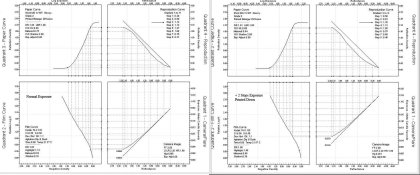There's a joke that Barnbaum's negatives are so dense that if he drops one, it puts a dent in the table.
...
It's been a while since I've read Barnbaum's book. I do remember thinking some of his ideas on how photography works come from another planet, but he does produce great work. ...
I almost fell for his "great work" until I purchased his Visual Symphony book. If you only look at the cover, you will be saying great things about his imagery, once you go through the whole book, you end up asking what in hell was this one about? I stopped reading BB after getting really close to signing up for his workshop. Research led me to reading a lot of different opinions on his workshop and working methods as well. Getting that book was part of my research. Surely we all have opinions and this is mine: if one cannot show consistency in proficiency perhaps he should rethink his calling.
Visual Symphony draws viewers with the cover of one of his famous shots of slit canyons (which BTW appear to me faked up with artificial lighting, but that is just my opinion and it does not take away visual impact of that particular series). The book is expensive (and somehow considered "collectible"), but given the general opinions of it, while unable to see one before purchase, I just wanted to get it. Found a copy in German language rather cheaply, but was concerned that price differential was related to print quality. So I directly asked BB and he confirmed all versions were printed with same tri-tone process. Lo and behold ... boring, uneven, mediocre come to mind not even half way through. And if that tri-tine was to blow one's mind, it failed to ignite in a large way. I'm not going to dig farther into his working methods and the workshop itself as I would be spreading opinions of others while being selective in what matters to me. I would advise anyone thinking of it (not sure if he's still doing it) to do own digging. The book itself killed the BB allure for me for good. Everything else just confirmed that marketing drives sales and desires and not necessarily actual quality behind it.
Ansel Adams could print superbly AND take great shots AND be smart enough to select the best for others to see. By comparison, BB isn't even an apple falling from supposedly same tree (and I read some opinions he's better printer than AA ever was, on aesthetics it isn't even a conversation).
I remember years back someone referring to Fred Picker as "a man who made significant contributions to photography, a man could who could not take a picture", my exact same assessment. I still take FP over BB any day, even after learning how FP's marketing was at a forefront of his venture. At least he could convincingly sell (and by that, promote importance of detailed approach to being successful, which applies to pretty much everything).











